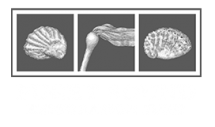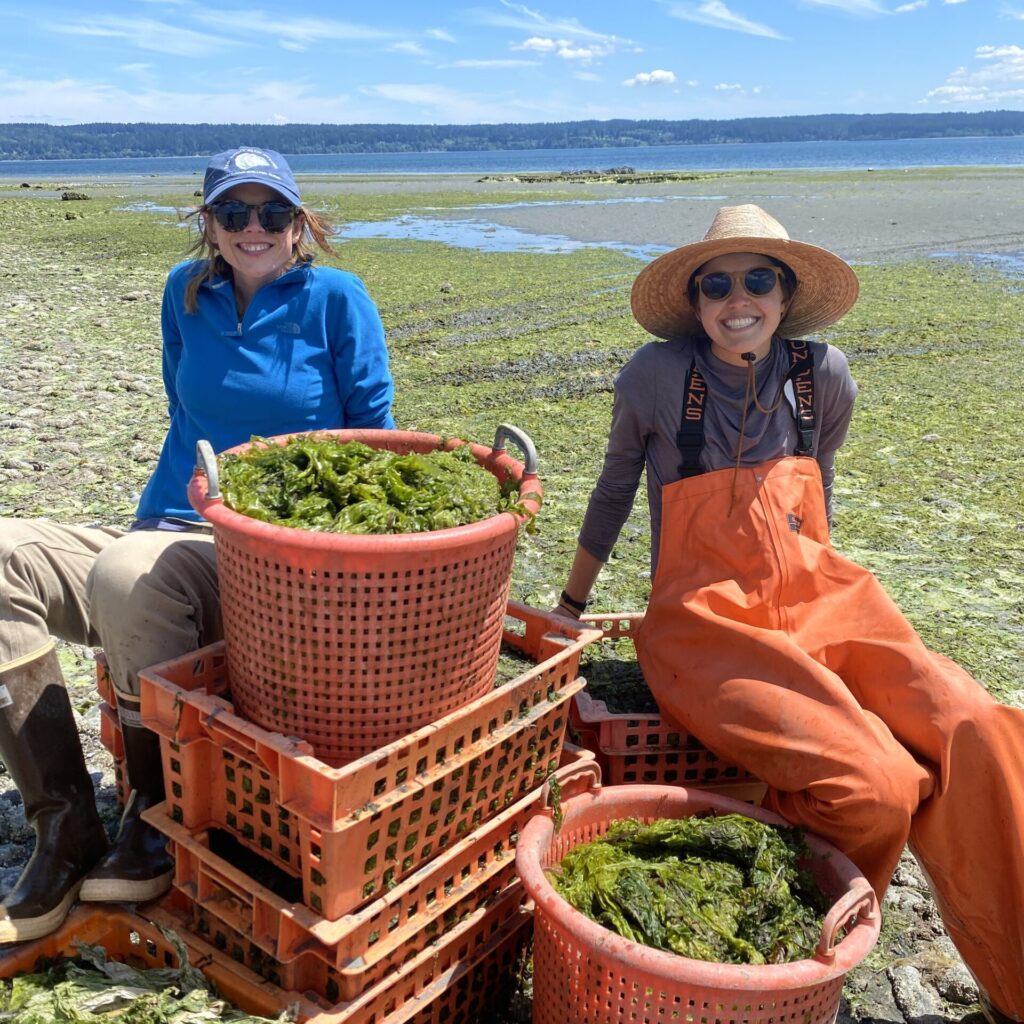Energy and nutrients flow between landscapes and seascapes – weaving the systems together, fueling ecological diversity and productivity. Historically, salmon were one of these conveyor belts. As they returned in large numbers to spawn and die in their natal streams, their carcasses remained, delivering parcels of ocean nutrients to the forest and soils, and providing food for scavengers. As salmon runs declined, so too did a pathway for conveying nutrients from sea to land.
At the same time, nutrient inputs from surrounding lands increased. Puget Sound has been inundated over the last century with excess nutrients from land-based sources, fueling algae blooms in local bays and inlets. When the blooms die back, the decomposition process uses up oxygen and increases acidity – creating a harmful environment for marine organisms. This phenomenon is clearly evident on shellfish farms – where aquaculture gear often accrues large mats of green macroalgae (Ulva spp.) in the warm summer months. Shellfish farmers struggle to remove the seaweed from their gear to maintain shellfish growth and survival. In 2017, to shine light on the need to address this problem, the Washington Blue Ribbon Panel on Ocean Acidification recommended exploring removal of excess seaweed from shellfish farms as a way to improve local water quality and support healthy shellfish growing areas.

